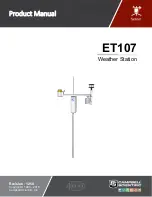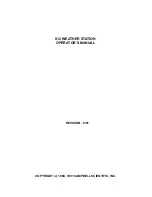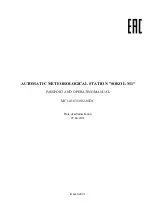
SECTION 1: THEORY OF OPERATION
369548.DOC
Page
6
Modem
(refer to schematic on page 29)
This base station uses separate modems for receive and transmit functions so that full-duplex operation
may be obtained. The A0-A1 address bus in addition to the individual read (RD*), write (WR*), and chip
select (MODEMTXCS*) lines control all three (3) modems. Modem operations are timed by Y2, a 4.9152
MHz clock module.
Modem chip U14 is dedicated to the transmit operation. Data from the D0-D7 bus is read by the chip,
and then converted to a 4-level FSK analog signal, which appears on the TXOUT pin. Op amp U21B
buffers the signal, which becomes the MODEM_TXMOD output. From this point, the signal is routed to
the modulation circuitry on the Exciter Board.
Chip U14 has the ability to demodulate receiver audio, although this capability is not used in most
systems. Incoming data-bearing audio from the Diversity Reception circuitry (and selected receiver)
appears at DISC_AUDIO. The signal passes through resistor R54 and into the modem chip. Resistor
R52 and capacitor C41 serve as feedback elements, limiting both the gain and bandwidth of an amplifier
within U14. The modem chip demodulates the audio into 8-bits of data, which exit U14 on the D0-D7 bus.
Chip U14 also provides a bias voltage for the analog circuitry on the Exciter Board. This voltage is about
2.5 volts DC, and it appears on the VBIAS line. The purpose of VBIAS is to bias the Exciter Board analog
circuitry for proper operation. Please note that if this voltage is low or missing, the Exciter Board circuitry
may not work.
Modem chip U15 is dedicated to the receive operation. Incoming data-bearing audio from the Diversity
Reception circuitry (and selected receiver) appears at DISC_ AUDIO. The signal passes through resistor
R56 and into the modem chip. Resistor R55 and capacitor C46 serve as feedback elements, limiting both
the gain and bandwidth of an amplifier within U15. The modem chip breaks down the audio into 8 bits of
data, which exit U15 on the D0-D7 bus.
Modem chip U16 is also dedicated to the receive operation, although it may not be used in this
application. The operation of U16 is exactly the same as U15.
Receive Signal Strength Indication Comparator
(refer to schematic on pages 32 & 33)
This section displays the RSSI comparator circuitry. A series of comparators (U20BCD) simultaneous
compare RSSI1 to RSSI2, RSSI2 to RSSI3, and RSSI1 to RSSI3. Within this process eight (8) possible
results are then forwarded by the comparators to a series of NAND gates (U18ABC), which reduce the
number of results to three (3) and translates the results for an analog multiplexer (U19A). To determine
which of the three (3) results is the strongest, the following needs to occur:
For Receiver 1 to be selected as the strongest signal, both input pins on the NAND gate (U18D) must
go high (driving pin 7 of U19A). If Receiver 1 has the strongest signal, a light emitting diode
(LED)(D1) lights indicating Receiver 1 was selected.
For Receiver 2 to be selected as the strongest signal, the inverter (U17B) must go high (driving pin 6
of U19A). If Receiver 2 has the strongest signal, D2 lights indicating Receiver 2 was selected.
For Receiver 3 to be selected the strongest signal, the inverter (U17C) must go high (driving pin 5 of
U19A). If Receiver 3 has the strongest signal, D3 lights indicating Receiver 3 was selected.
SEL_RSSI is the output selected with the strongest signal. When RSSI voltage exceeds a threshold,
another LED (D4) lights. As the other three (3) LEDs, this circuit is intended as a diagnostic tool. It
provides a go/no go indication that an RF signal has been received. A pot (R74) sets the turn-on voltage.








































